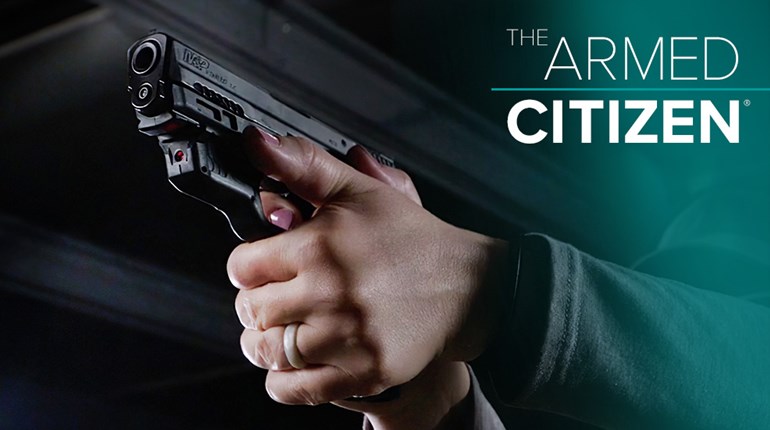
In terms of moving through a structure, such as a house, while armed, the rule of thumb is that it’s a bad idea, particularly for untrained individuals. Generally, when it comes to a life-threatening scenario like a home invasion, the best strategy is to call 911, back up in a corner of your go-to safe room and wait for police to arrive.
However, there are times when you might need to move through a building where an armed assailant is present. For example, your master suite may be across the house from your children when you hear a bump in the night. Even more common, you may hear that bump in the night and feel the need to investigate it, knowing with almost 100-percent certainty that the noise came from the basketball your kid left atop washing machine falling off. Almost. Hence the need to investigate.
In those situations, knowing how to move inside a structure effectively (with the lowest risk possible) is a good skill to have. Many defensive-shooting classes cover small pieces of the puzzle, like how to use doorways or other physical objects as cover so that it’s harder for someone to see you or shoot at you. However, they usually focus on the problem of shooting around the corner and not finding the target in the first place.
One class that works more on the “seek” part is Armed Movement in Structures (AMIS), taught by Craig Douglas of the Shivworks Collective. It’s an intense 20-hour immersion over two days that I experienced in Pittsburgh, PA, as hosted and assisted by Shawn Lupka of Antifragile Training.
AMIS takes basic concepts of cover and concealment and puts them on steroids, so the student can appreciate the real-world implications of these elements.
“Pie-ing” around a corner to look deeper into a room becomes more careful and deliberate when there are not only actual people you might find, but people who might shoot you with an airsoft pistol in a force-on-force environment.
Darkness and shadows become more ominous as you realize that they do as good a job of concealing people as any piece of furniture. Targeting a bad guy doesn’t sound as enjoyable when you realize how many decisions you’ll need to make and execute on after you find him—assuming you find him before he finds you.
The class isn’t valuable only for learning how to search buildings or get out of them safely in a crisis, though. Learning best practices for doing that also helps teach you how to protect yourself when you get stuck inside.
One of the principles of AMIS is to use your classmates as props and training partners. That means you get to have fun making it hard for your buddies to find you as they navigate through parts of a building. In the process, you’ll learn where human beings can fit and what potential hiding spots go unnoticed as your eyes slide around a room.
It does, in fact, become an elaborate round of hide-and-seek with lasers and airsoft pellets flying in all directions…but only after the breathless suspense of wondering just where everyone’s stashed themselves away. No question, it’s a great way to spend a few days training, as long as you don’t mind a few airsoft welts.
In my iteration of AMIS, we had several police officers attending on their own time and their own dime. Their required training did not sufficiently address the problem of responding to calls in buildings for them to feel confident in their ability to do so while keeping themselves and the people they serve safe. While best practice dictates going in with a partner, they told us that's not always possible in reality.
We also had students who feared not only long response times from local police, but even complete non-response because their houses are so rural or difficult to find. Still more of us just didn’t want to find ourselves unprepared for the potential of a criminal threatening our lives.
However, one of the things we learned was that clearing houses and other buildings is not nearly as easy as it looks on paper, even under the guidance of a good instructor using a solid curriculum and plenty of practical exercises and scenarios. There are a lot of nuances and even the briefest lapse can lead to bad outcomes.
By the end of class, most of us decided it was a bad idea, so we don’t want to do it unless we absolutely have to—but now we can.




































